In this article, as a Turkish local and a fashion expert, I’d like to help you learn more about the most popular traditional Turkish clothing and clothes.
Plus, later in this article, I will tell you where to buy traditional Turkish clothes and tell you a brief history of Turkish fashion.
If you’re ready, fasten your seatbelts, and let’s start our tour of traditional fashion in Turkey!
Before we continue, I would like to present to you my fashion guides that you can read for further information.
1. Most Popular Traditional Turkish Clothes
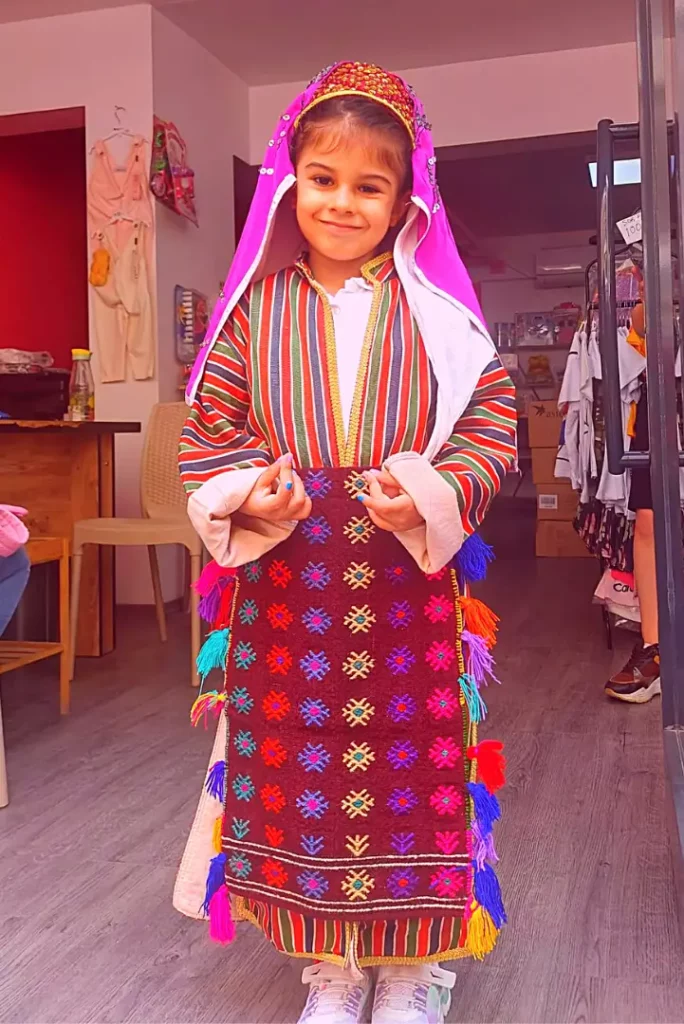
As imagined, there are plenty of fascinating examples of traditional clothing. Most of them are replaced by modern style clothing like jeans and T-shirts.
Today, some traditional clothes like Salvar are worn in rural communities. Other than that, traditional clothes are only worn in traditional events or folklore dance performances.
Yet, some motifs and designs of old Turkish fashion still live in modern men’s and women’s Turkish fashion designs.
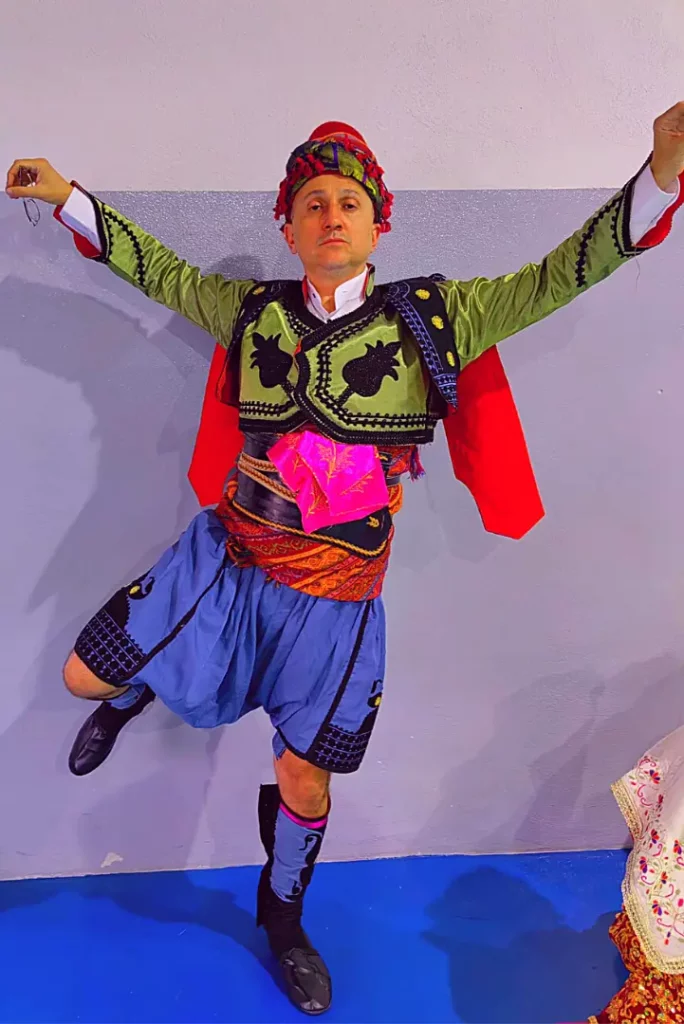
2.1. Salvar (Şalvar)
Şalvar is the most famous Turkish traditional unisex pant. Salvar is suitable for everyday wear and for formal occasions.
Salvar is a baggy pants that is tight at the waist and the ankle, creating a ‘balloon-like effect.

Salvar can be made from a variety of materials, including silk, cotton, or wool, and often feature intricate embroidery or colorful prints. While the design is essentially the same, the specifics can vary between regions.
Salvar also inspired the American Bloomers, also called the Turkish dress, the American dress, or simply the reform dress.
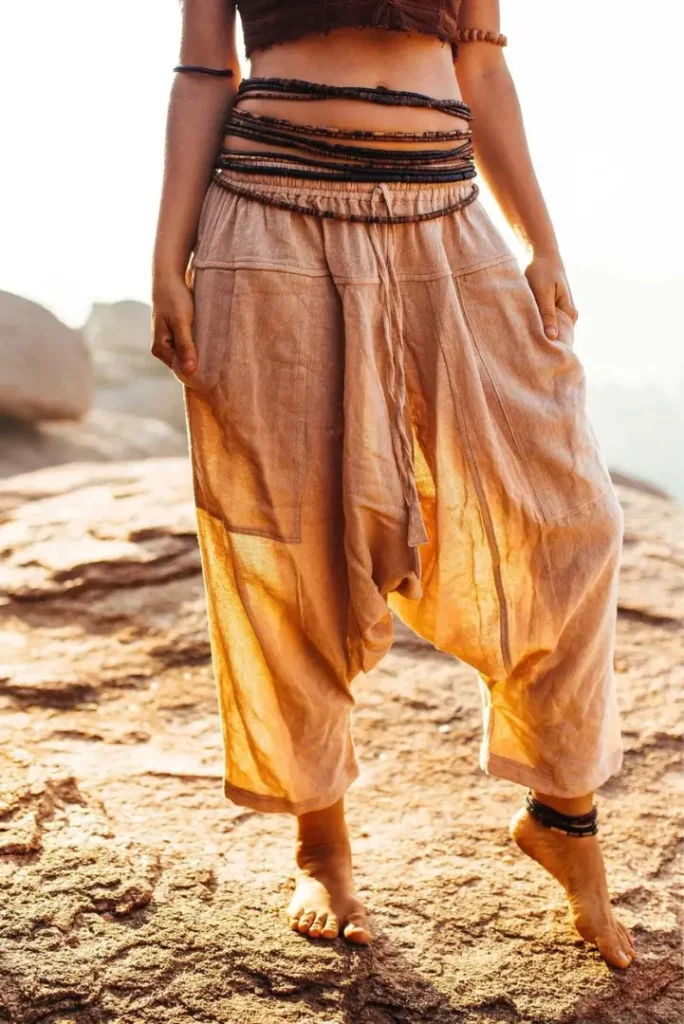
In rural parts of Turkey, salvar is still a popular piece of traditional Turkish clothing because it is very comfortable to wear.
In big cities like Istanbul, women prefer şalvars as well but style them in a more modern way.
2.2. Kaftan and Bindallı
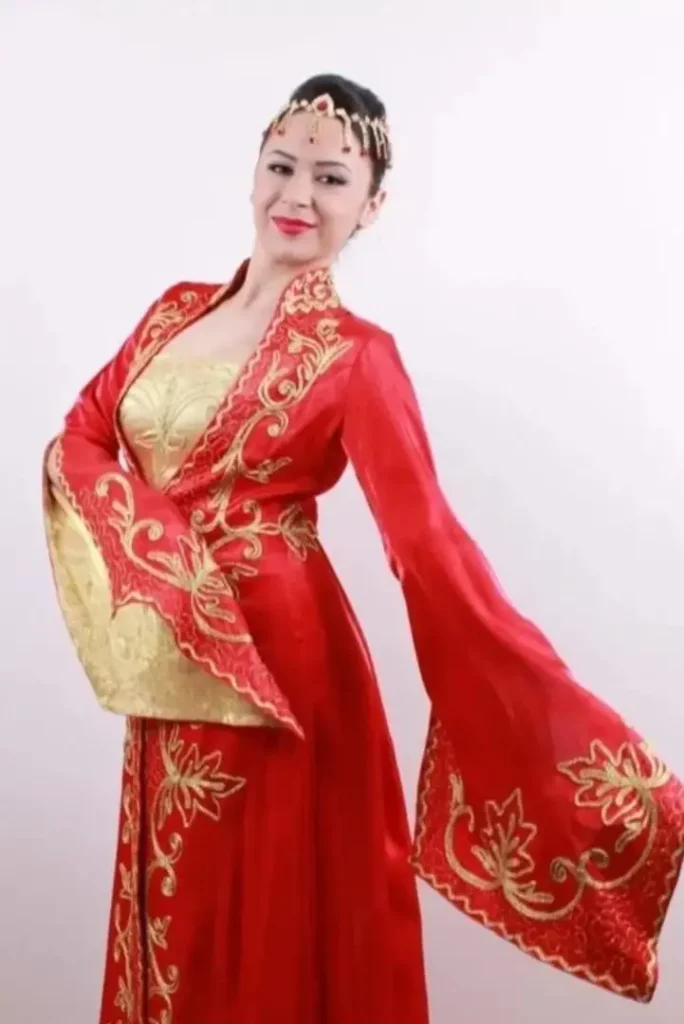
Kaftan, which is another unisex clothing, was commonly worn by the wealthy in the Ottoman period.
Ottoman royals preferred embroidered and fur-lined luxurious kaftans.
Bindallı is actually mostly confused with kaftan. Even though these two look similar, there are certain differences.
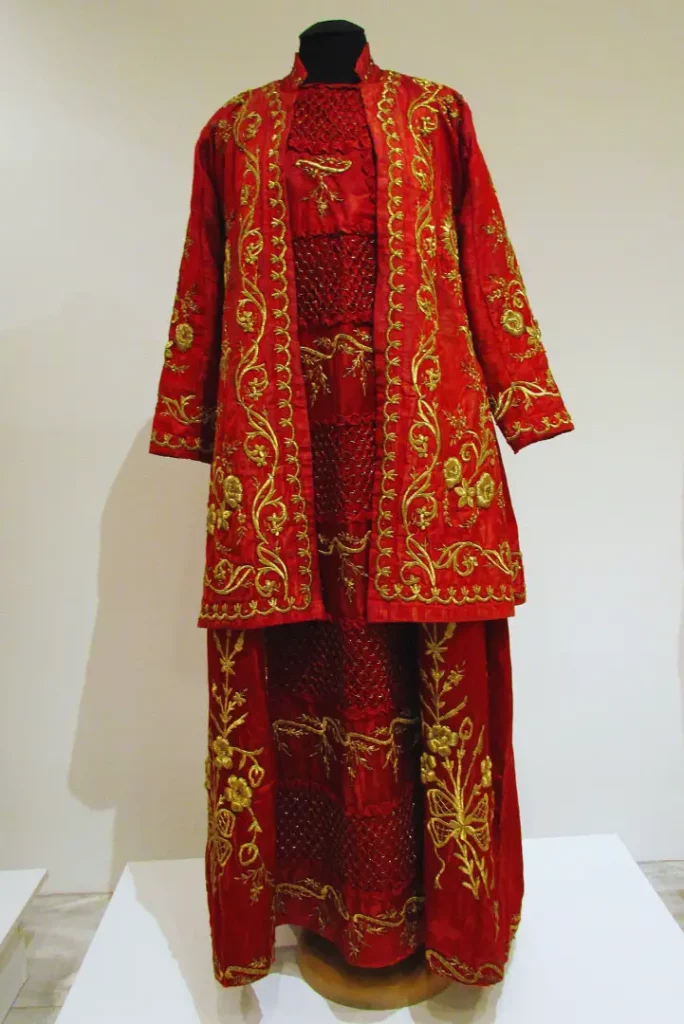
For starters, embroidery in bindallis is usually more simple. Additionally, the main difference is that bindallıs have a thinner fabric than kaftans.
Today, women still wear kaftans and bindallı during their henna night.
2.3. Yelek (Ottoman Vest)

The yelek, a traditional Turkish vest or waistcoat, has a deep-seated history stretching back to the time of the Ottoman Empire, which spanned from the 13th to the early 20th century.
In the hierarchy of Ottoman clothing, the yelek occupied a significant place.
The yelek was an integral part of the traditional attire for both Turkish women and men, characterized by intricate designs, luxurious fabrics, and meticulous craftsmanship.
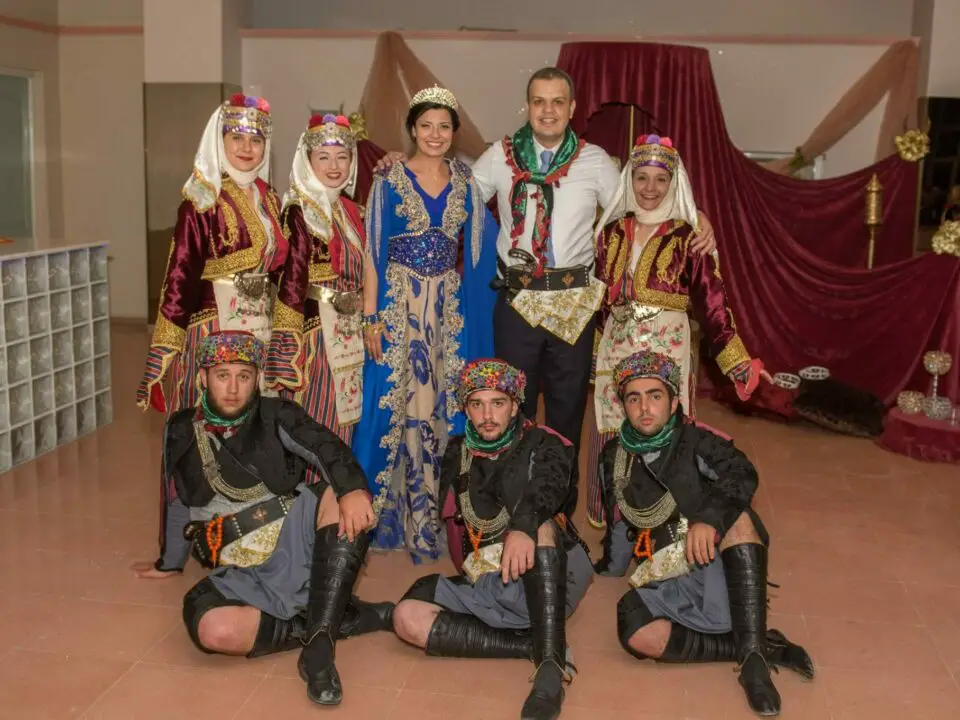
It was typically worn over a shirt or under a caftan, serving both functional and decorative purposes.
Historically, yeleks were made from a variety of high-quality fabrics, such as silk, velvet, and brocade.
Yeleks often boasted intricate designs and vibrant colors, with adornments like gold threads, pearls, and precious stones, depending on the wearer’s social status.
2.4. Fez (Turkish Hat)
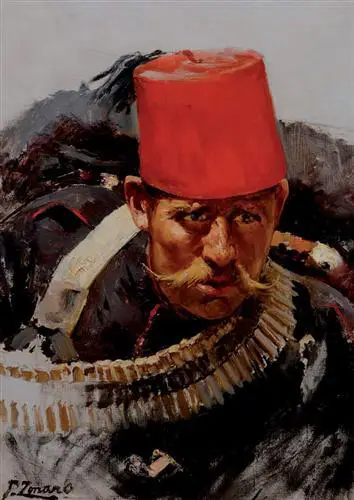
Fez was one of the most popular Turkish menswear in the Ottoman Period. It’s actually a hat, and there’s usually a tassel hanging from the top of it.
The color of this hat is red or crimson, and it has a cylindrical shape.
The Fez takes its name from the city of Fez, Morocco, where the dye to color the hat was produced.
However, its widespread use and global recognition are largely credited to its adoption by the Ottoman Empire.
During the Ottoman era, various forms of headwear were prevalent, each representing different statuses, professions, and regions.
However, the Fez became particularly significant during the Tanzimat period in the 19th century, symbolizing modernization and reform.
In 1826, Sultan Mahmud II introduced Western-style military uniforms as part of his modernization efforts and included the Fez as part of the official attire.
2.5. Peshtemal (Turkish Towel)
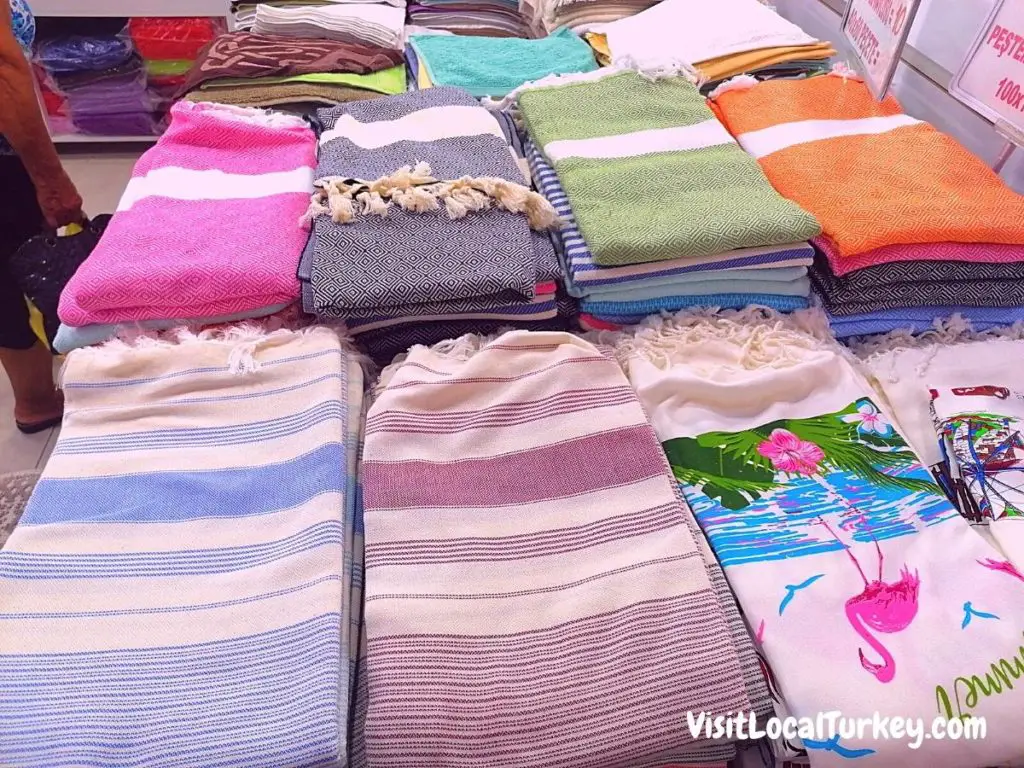
The Peshtemal, made with the same clothing as Turkish towels, has been a fundamental part of Turkish bath culture for centuries.
The Peshtemal word is more used when a Turkish towel is used for clothing.
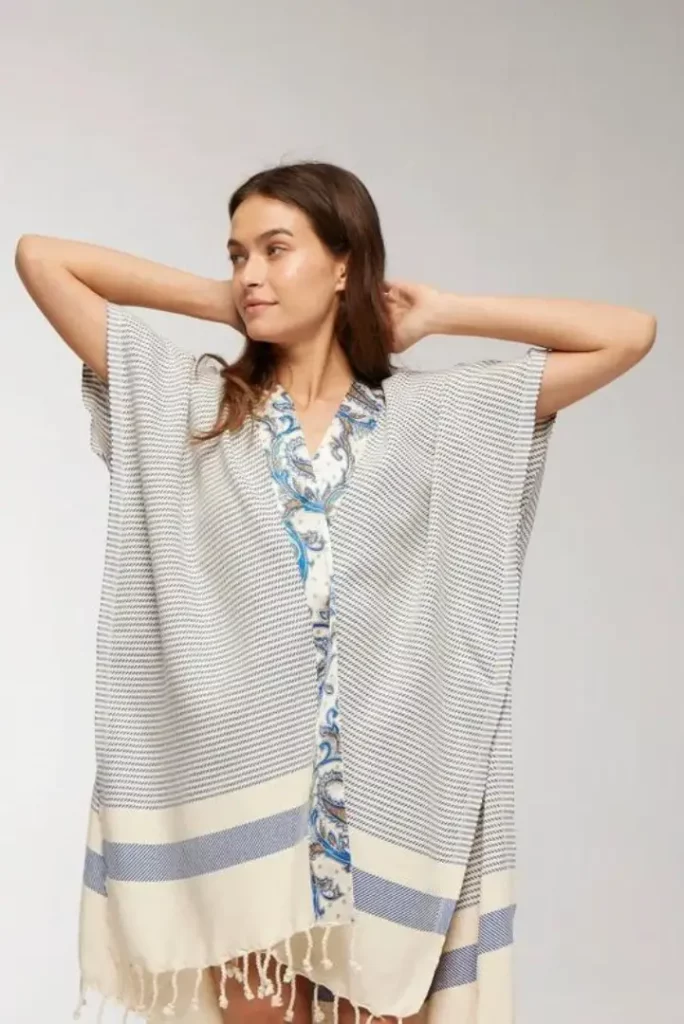
Peshtemals are traditionally woven on handlooms from natural fibers such as cotton, linen, or even silk.
The most typical form of Peshtemal is a flat, thin, and highly absorbent towel, measuring about the same size as a beach towel.
The design of a Peshtemal is typically characterized by stripes or checks, with a hand-knotted fringe at both ends.
However, regional variations exist, with different areas of Turkey renowned for their unique weaving techniques, patterns, and colors.
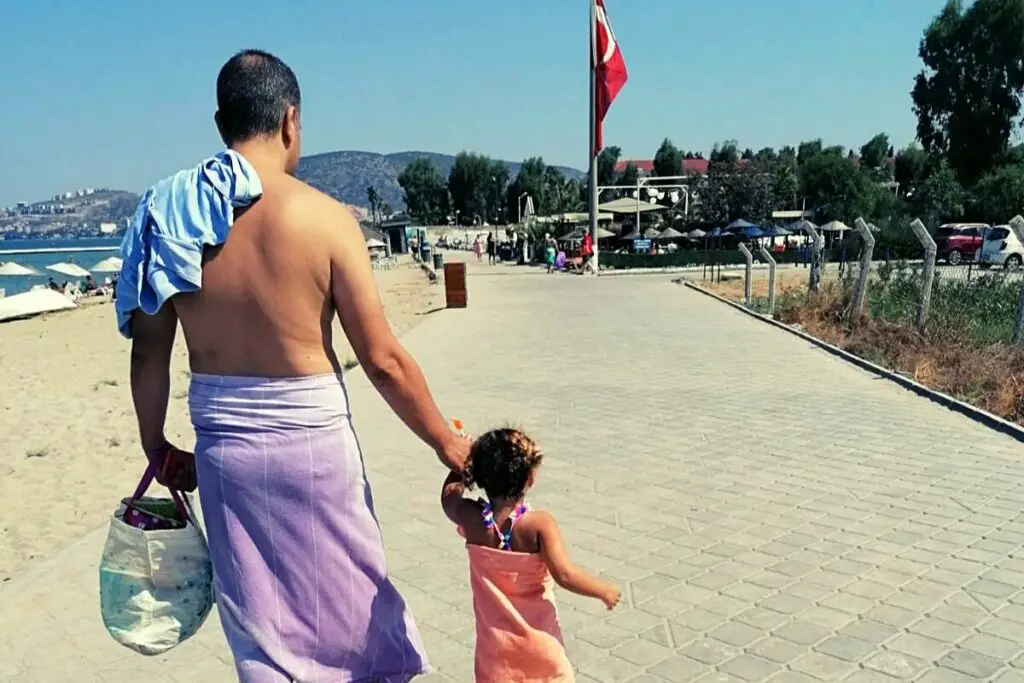
Pestemal’s uses have expanded significantly over the years.
Its absorbent yet quick-drying qualities, lightweight nature, and compact size have made the Pestemal a versatile textile, gaining popularity far beyond the Turkish bath.
2. Where to buy Turkish Traditional Clothing?
When looking to buy traditional Turkish clothes online, the best shopping website is Etsy. Etsy has way more of a variety of Turkish Traditional Costumes than Amazon.
In Turkey and in Istanbul, the best place to buy traditional Turkish clothes is the Grand Bazaar. You can easily find traditional clothes and any accessories in the Grand Bazaar, along with many Turkish souvenirs.
Additionally, there are plenty of places to shop for traditional Turkish clothes in Eminönü, Grand Bazaar, Şişli, and Bakırköy districts of Istanbul.

You can also come across stores that sell authentic and traditional Turkish clothes in vacation spots around Turkey. These stores usually attract tourists but also appeal to locals as well.
3. Short History of Turkish Fashion
Turkey has a rich history that you can still see in modern Turkish fashion designs.
In the big cities of Turkey, you can see the beautiful combination of traditionality with modernity.
Without a doubt, modernity has a great impact on Turkish fashion.
However, we can’t deny the fact that even today, traditional Turkish designs influence Turkish designers and Turkish Fashion Brands.
The Ottoman period may be the most significant time period in Turkish Fashion history.
The motifs and the embroideries created in this era still have tremendous value in modern Turkish fashion today.
Turkish influence in Europe was named Turquerie; from the 16th to 18th centuries, European fashion designers also imitated aspects of Ottoman art and culture.
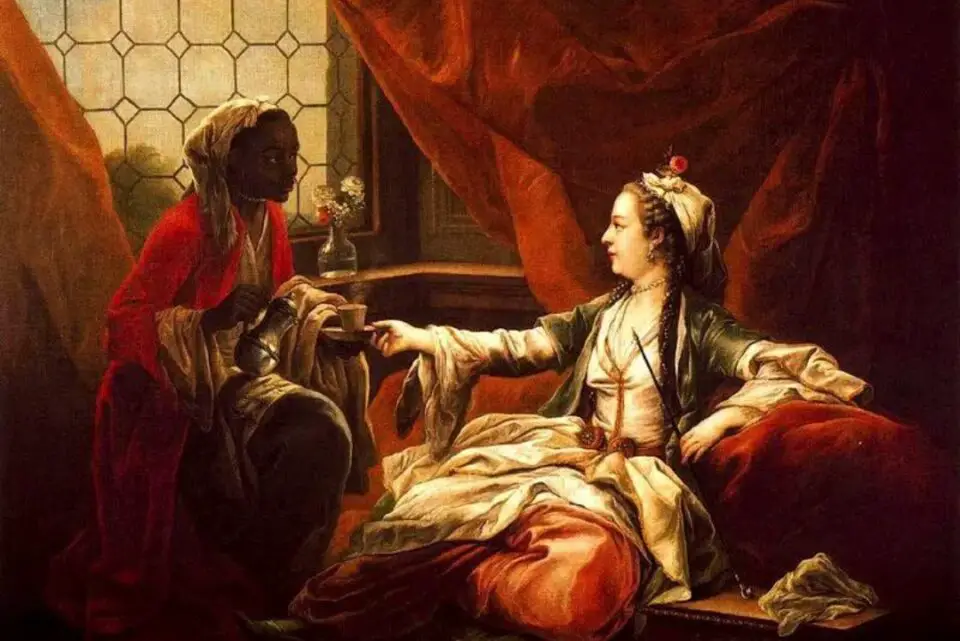
Even Elizabeth I was a fan of Turquerie style fashion.
Predictably, the fabrics used in the Turquerie era were exceptionally high-quality as well. The most commonly used fabrics were silk, brocade, velvet, cashmere, and cotton.
In the classical Ottoman period, most Turkish clothes were suitable for both men and women.
For instance, clothes like kaftans and şalvars are all examples of unisex designs.
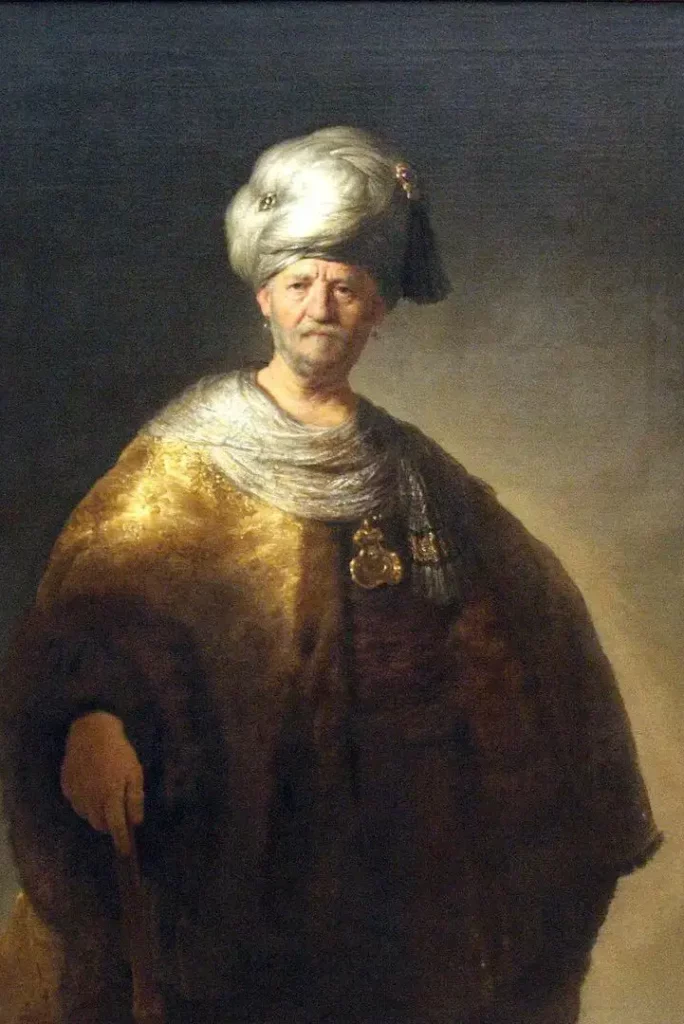
During the 19th century, with the Tanzimat reforms, European fashion started to influence Turkish fashion designers.
Jackets, waistcoats, ties, high-heeled shoes, and many more Western designs started to be worn by intellectuals, administrators, and officers of the Ottoman Empire.
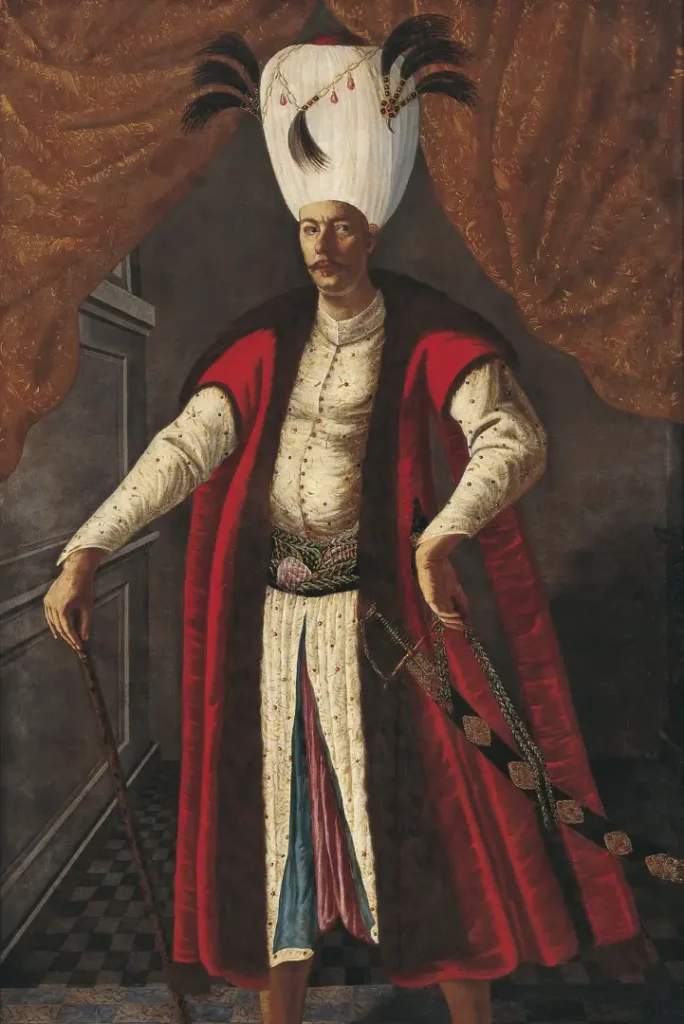
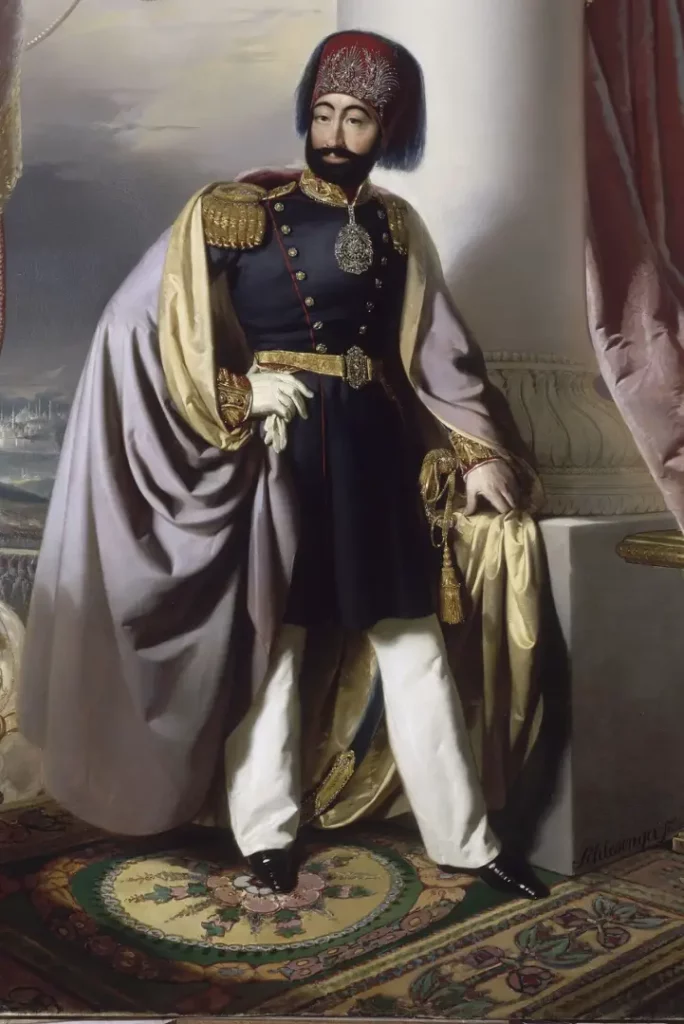
After Atatürk’s reforms, the clothes became more modernized and in line with European clothing. Most clothing displaying social, ethnic, and religious identity was banned. Thus, leading to a more homogenous fashion style.
